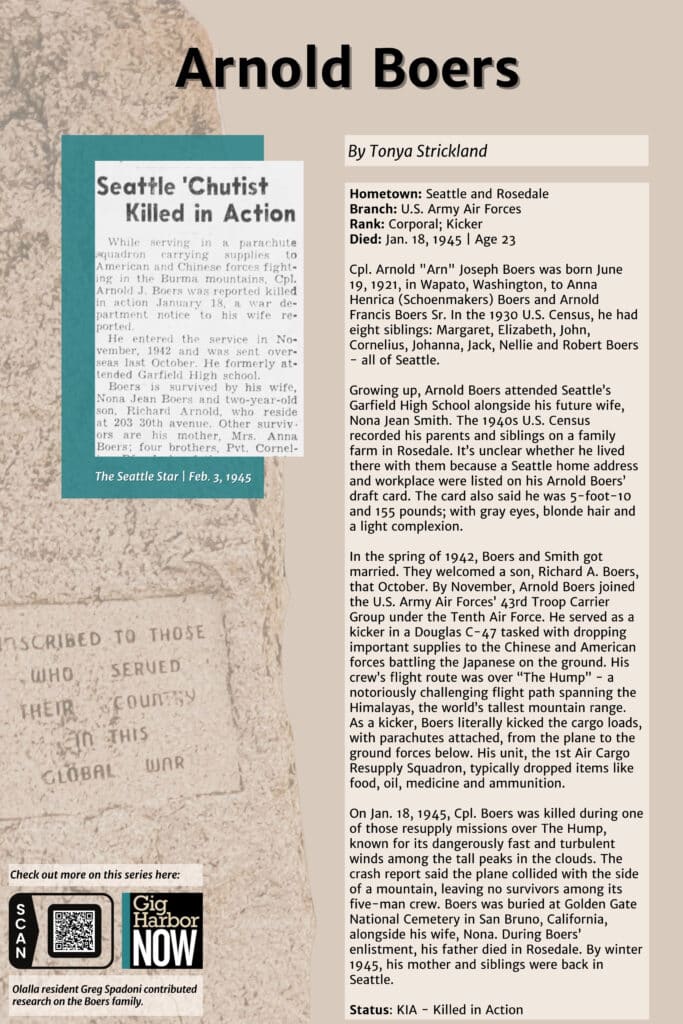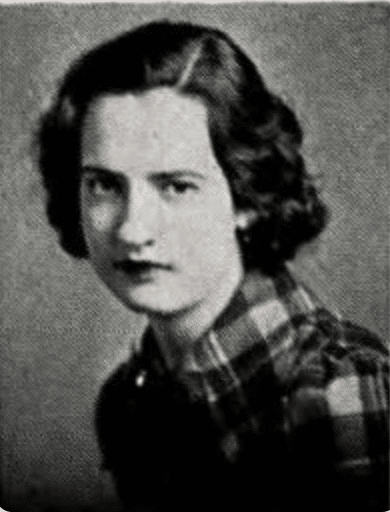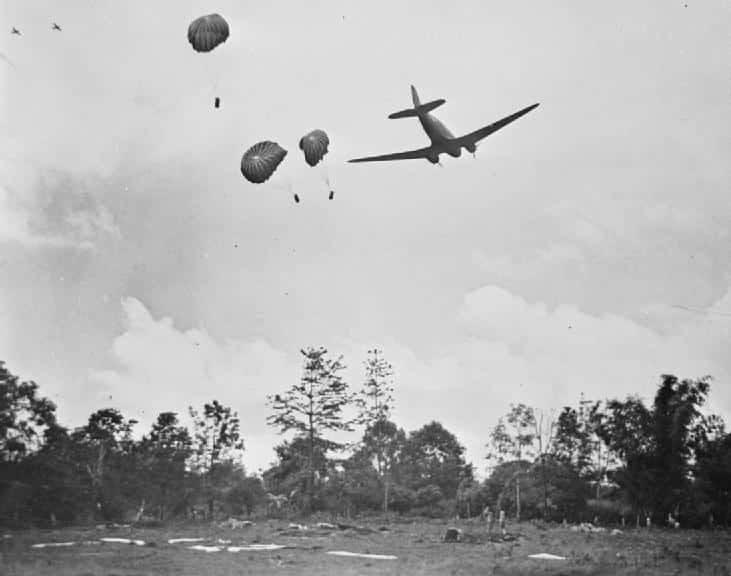14 Names to Remember Project
14 Names to Remember | Arnold Boers

Gig Harbor Now columnist Tonya Strickland researched and profiled the 14 local men whose names appear on the World War II monument at Kenneth Leo Marvin Memorial Park. Find all 14 profiles here.
Hometown: Seattle and Rosedale
Branch: U.S. Army Air Forces
Rank: Corporal; Kicker
Died: Jan. 18, 1945 | Age 23
Cpl. Arnold “Arn” Joseph Boers was born June 19, 1921, in Wapato, Washington, to Anna Henrica (Schoenmakers) Boers and Arnold Francis Boers Sr. In the 1930 U.S. Census, he had eight siblings: Margaret, Elizabeth, John, Cornelius, Johanna, Jack, Nellie and Robert Boers. At the time, the family lived in Seattle.
In fact, it’s unclear whether the corporal ever lived in the Gig Harbor area. However, his parents and siblings lived on a Rosedale farm for a brief time, according to the 1940 U.S. Federal Census.
Growing up, Arnold Boers attended Seattle’s Garfield High School alongside his future wife, Nona Jean Smith. They married March 21, 1942. A month prior, Boers registered for the draft and was listed as 5-foot-10 and 155 pounds; with gray eyes, blonde hair and a light complexion. He registered with a Seattle home address and listed his civilian job as the Seattle General Depot, a U.S. Army supply hold, at 4735 E. Marginal Way, in a position described as “metal working.” The site was originally a Ford Motor Co. assembly plant.

Nona Jean Smith. U.S., School Yearbooks, 1900-2016 database; 1937 Garfield High School, Seattle; via Ancestry.com.
About five months after the wedding, in October, Arnold and Nona welcomed a son, Richard A. Boers. A few weeks later, Arnold joined the U.S. Army Air Forces on Nov. 9, 1942.
A furlough trip made early in his enlistment appeared in the Nov. 2, 1943 edition of the Peninsula Gateway newspaper. Arn and Nona Boers, with their son in tow, visited his parents in Rosedale. The story said he was stationed at “Lomila (sic) air base,” otherwise known as the Lomita Flight Strip, an Army Air Corps training ground for P-38 fighter planes in Torrance, California.
Boers reportedly switched units about a month before his death, moving from a ground crew unit of the Army Air Forces and transferring “at his request, to a re-supply squadron — and was on this duty when killed,” according to the Feb. 9, 1945 edition of the Peninsula Gateway.
His new assignment was with the 43rd Troop Carrier Group’s 1st Air Cargo Resupply Squadron under the 10th Air Force stationed in Southeast Asia. There, he served as a kicker in a Douglas C-47 aircraft. His crew was tasked with dropping supplies to Chinese ground forces fighting the Japanese in the China-Burma-India Theater of Operations. Kickers used their legs to push cargo supply bundles, with parachutes attached, from the plane to the ground forces below. The supplies were usually food rations, oil, medicine and ammunition. When the Japanese took out the Burma’s main road, the Army Air Forces directed crews to navigate “The Hump,” a flight route over the Himalayas – the tallest mountain range in the world. The path was notoriously challenging to navigate due to turbulent winds and high peaks that could surprise pilots in low visibility.

This isn’t Boers’ plane but here’s a similar scenario where a C-47 released parachutes with ammunition and rations for troops in the field. 1944. U.S. official photographer, public domain, via Wikimedia Commons.
On Jan. 18, 1945, Cpl. Boers was killed when his C-47 collided with the side of a mountain, leaving no survivors among the six-man crew, according to the Army Air Forces official crash report. His death was also reported in the Feb. 3, 1945 edition of The Seattle Star. Boers was buried at Golden Gate National Cemetery in San Bruno, California. His widow, Nona, was buried beside him after she died on July 20, 1969 from pneumonia. She was 49 years old.
During Boers’ enlistment, his father died in Rosedale. By winter 1945, his mother and siblings were back in Seattle.
Status: KIA – Killed in Action
Olalla resident and Gig Harbor Now Columnist Greg Spadoni contributed historical information to this story.
